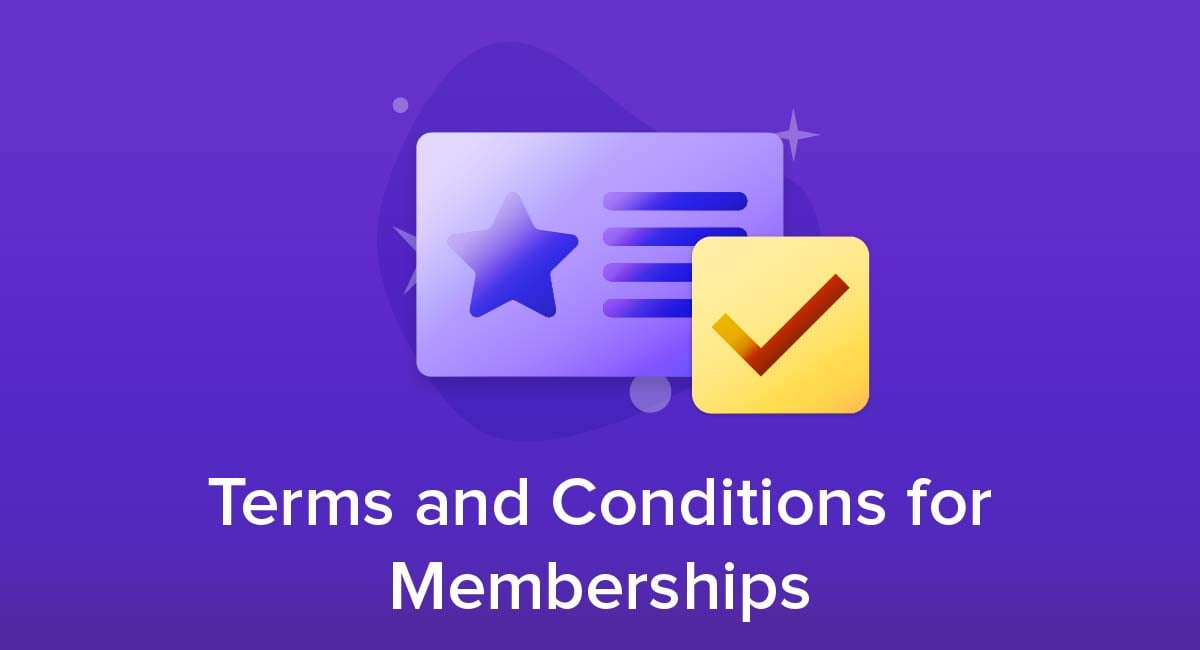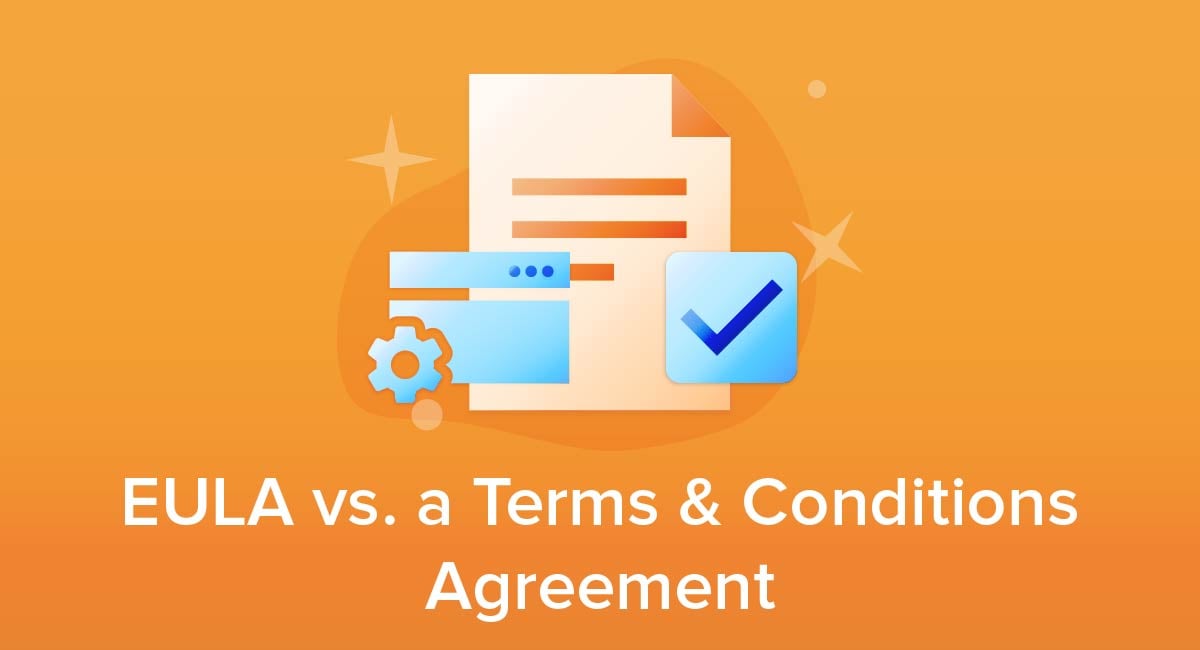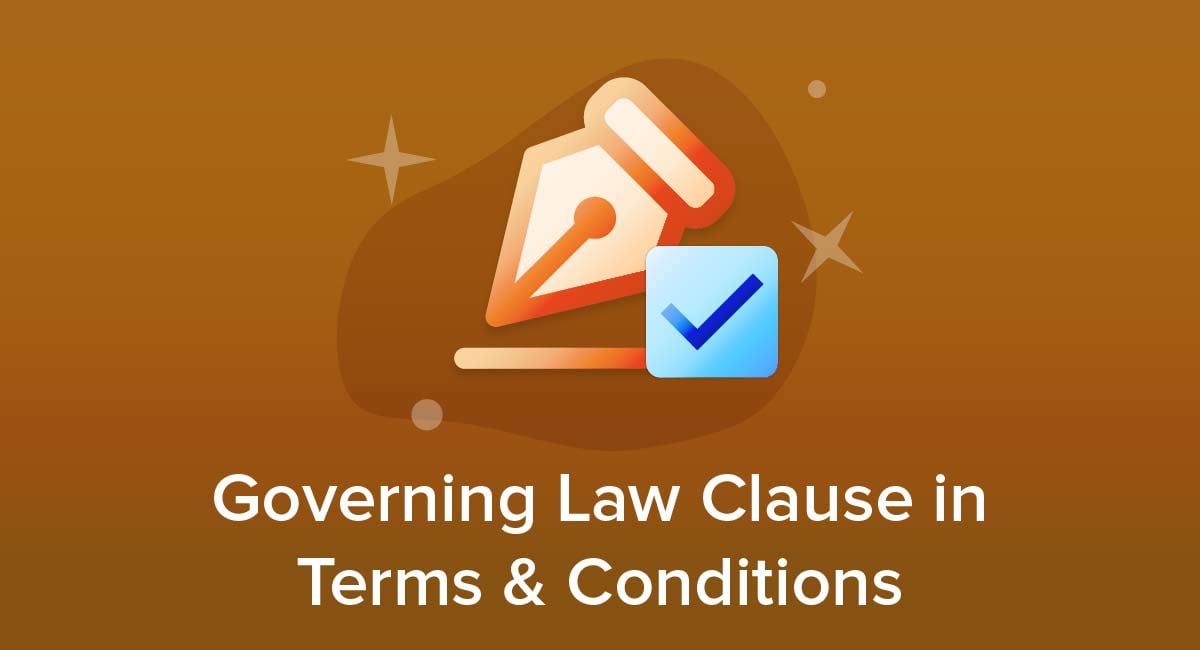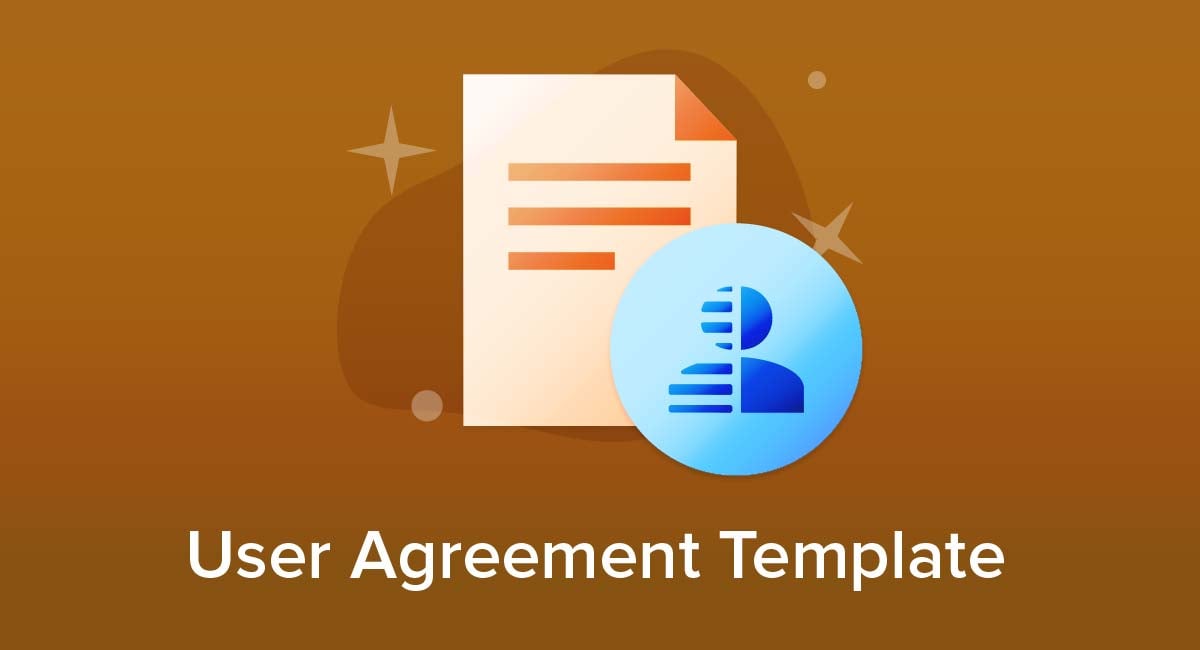
A User Agreement is an excellent addition to a website or mobile app for a number of reasons. It helps you set out the rules and requirements for users who visit your site or download your app.
This article will help you understand if a User Agreement is something you want, and if so, how to write and display your own.
Our Free Terms and Conditions Generator is created to help you generate a professionally drafted agreement that can include various terms and conditions for your site and/or app.
- Start the Free Terms and Conditions Generator from our website.
- Select platforms where your Terms and Conditions will be used (website, app or both):
- Answer a few questions about your website or app information:
- Select the country:
- Answer a few questions about your business practices:
-
Enter your email address where you'd like to receive the new Free Terms and Conditions and click "Generate":
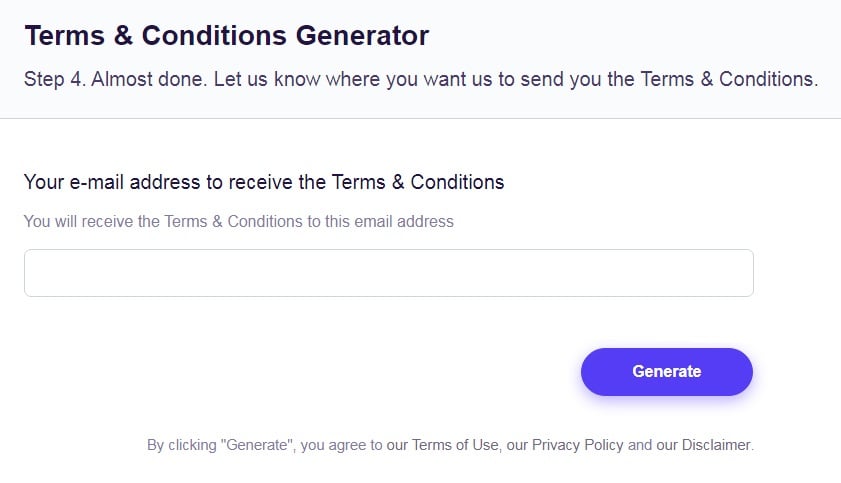
Once generated, you can copy and paste your Free Terms and Conditions agreement on your website or app or link to your hosted Free Terms and Conditions page.
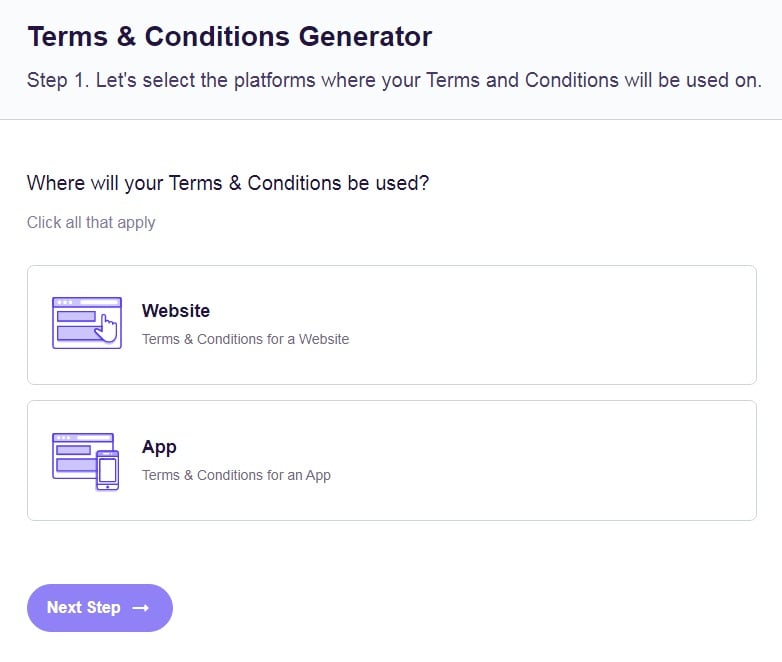
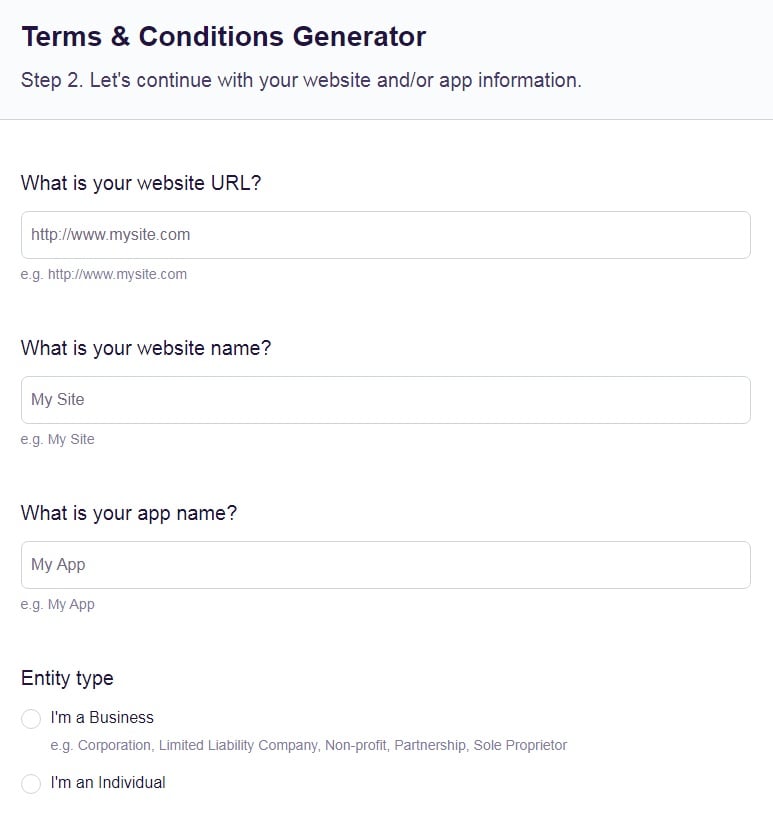
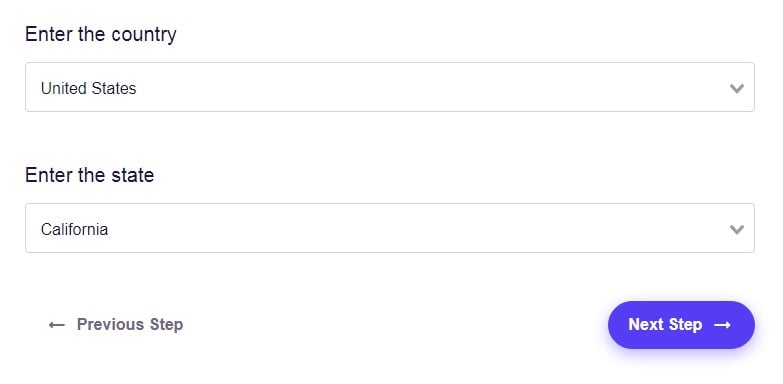
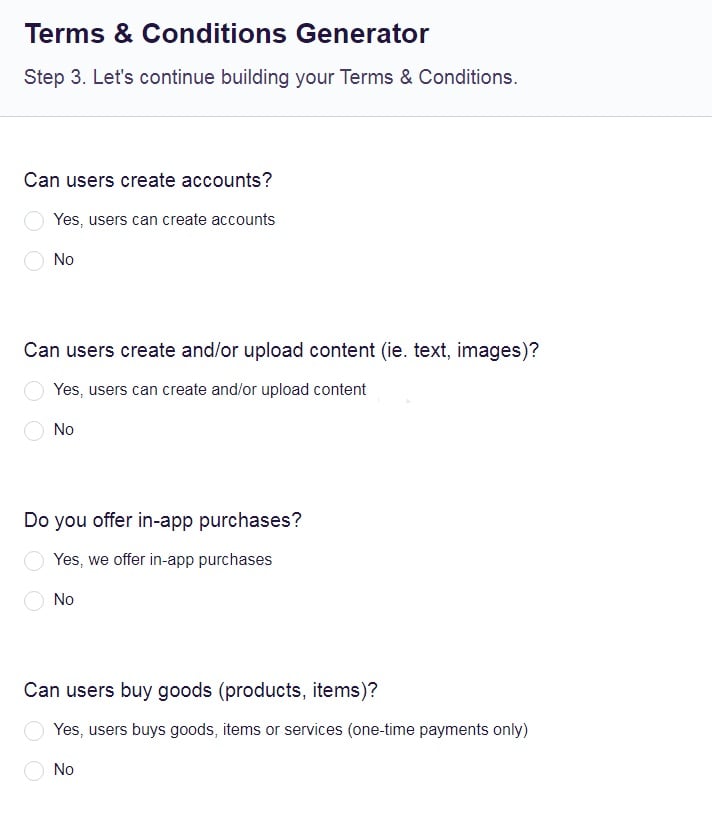
- 1. What is a User Agreement?
- 2. Why Have a User Agreement?
- 3. What Clauses Should a User Agreement Include?
- 3.1. User Rules
- 3.2. Intellectual Property
- 3.3. Personal Data and Your Privacy Policy
- 3.4. Service Level
- 3.5. Governing Law
- 3.6. Disclaimer of Warranty/Limitation of Liability
- 3.7. Termination
- 4. How to Display and Get Agreement For Your User Agreement
- 5. Summary
What is a User Agreement?
A User Agreement is a binding agreement between you and your users. It outlines the rules that users must abide by, and what they must not do. Issues like intellectual property and governing law will be addressed, as well as warranties and limits to your liability.
In principle, a User Agreement is quite similar to a Terms and Conditions agreement. But don't get too hung up on the difference in terminology. Whether you call it a User Agreement or something else, the key is that it is a legally binding agreement that you and the user must both follow.
Why Have a User Agreement?

The primary reason to have a User Agreement is to reduce the likelihood of a legal dispute, particularly one that leads to legal action.
The secondary reason for a User Agreement is to improve your chances of winning any legal dispute that does happen. Showing a user agreed to a User Agreement that sets out a clearly written, unambiguous position on the point in dispute will usually boost your case.
Another benefit of a User Agreement is that you build trust with potential users by showing you are professional, open and clear about what you do and don't offer and allow with your service.
A User Agreement could deter some people from becoming users if they don't like some of your rules. However, this can be a benefit if they are the type of user who'd be more likely to behave in the ways your User Agreement aims to stop.
What Clauses Should a User Agreement Include?

Below are some of the key clauses to include in a User Agreement.
User Rules
This is arguably the most important section in your User Agreement and will vary the most depending on your business, service or website. Simply put, you need to let users know what activities are not allowed, and what is expected of them when it comes to behavior.
You may need to give specific details for clarity, but some of the broad categories of action you might want to list are:
- Causing harm to your site or business
- Causing harm to other users
- Posting illegal or offensive material
- Breaking any laws while using the service or site
- Breaching another user's privacy
- Sharing a password to allow other people to use an account
- Creating multiple accounts
- Using automated tools to abuse access to the service
- Downloading material without permission
- Reproducing any material from the site without permission
Here's how Sports Business Journal gives specific details of banned actions:
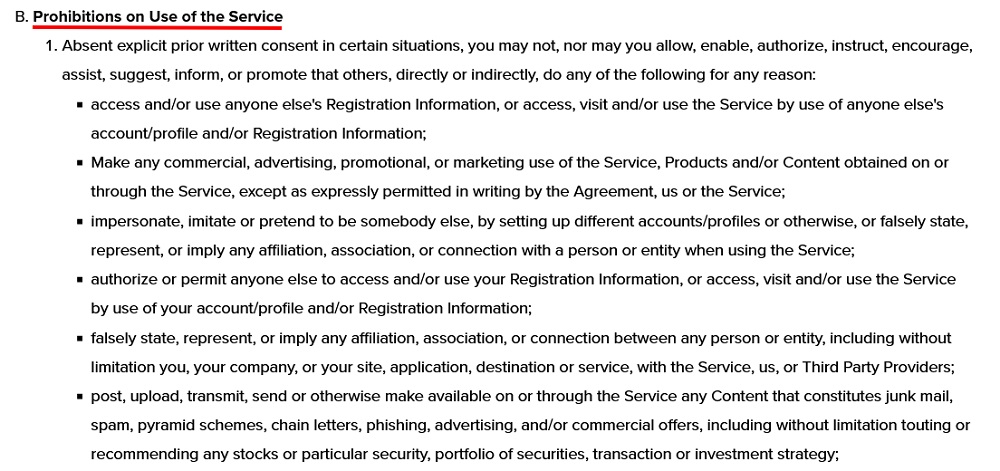
You also need to detail the consequences of breaking the rules. This could include:
- A warning
- A temporary suspension from the service
- A permanent ban from the service or termination of access
Explain what happens to any membership or subscription fees if you suspend or ban a user.
LinkedIn makes clear it keeps a range of consequences open:

Intellectual Property
Intellectual property covers copyright (original expressions of ideas in writing, audio or video), patents (ways of doing something) and trademarks. You should address the following aspects of intellectual property:
- Your intellectual property - Make clear that you own your intellectual property and explain any permissions you are giving. This could include permission to use or reproduce material.
- Your users' intellectual property - Explain whether you require users to give up their intellectual property or give you a license (permission) to use in any material they post to a website or share using your service.
eBay covers users licensing their intellectual property rights and not breaching third party rights:
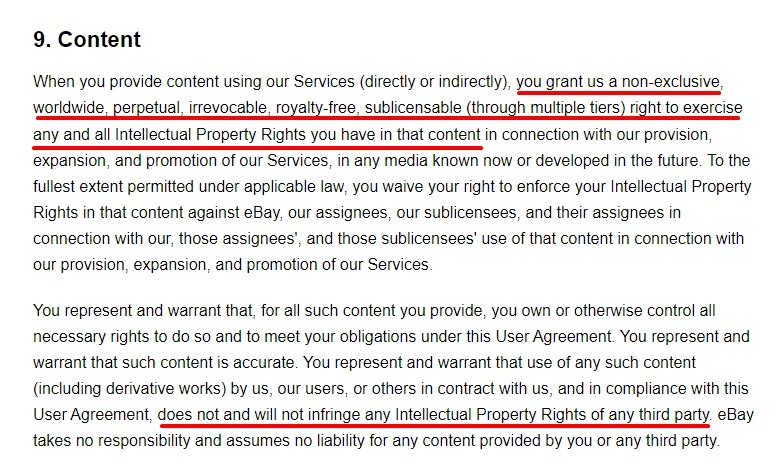
Personal Data and Your Privacy Policy
If you process personal data about your users, you need a Privacy Policy. If you have a Privacy Policy, it's worth noting it and linking to it in your User Agreement.
Key points to cover usually include:
- What personal data you collect and how
- What you use it for
- Who (if anyone) you share, sell or otherwise disclose the data to
- What rights the user has to check, correct or request the deletion of their data
- When and how you delete personal data
Pure gives an outline of how it handles privacy, then links to a full Privacy Policy:

Service Level
You may have a dedicated Service Level Agreement detailing your commitments. This is particularly common with paid software services. If you have a dedicated Service Level Agreement, refer and link to it in your User Agreement.
If you don't have a dedicated Service Level Agreement, you can cover similar points in a clause in your User Agreement. This should include:
- Quantifiable commitments such as a service being available a particular percentage of the time
- What compensation you offer if you fall short, for example service credit or refunds
- Any relevant conditions or exemptions
Making service level commitments can attract potential customers but is a legally binding promise. Don't make it unless you are willing and able to provide the relevant compensation if necessary.
Mindtickle summarizes the key points of its service level commitment, then links to the full Service Level Agreement:
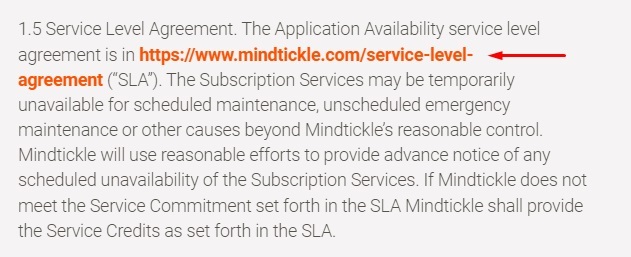
Governing Law
A governing law clause specifies how and where any legal action relating to the User Agreement will take place. It usually covers some or all of the following:
- Which country or area's laws apply to the agreement (the "governing law")
- Which court or court system can hear any legal case (the "jurisdiction" or "venue")
- Whether the two sides must go through arbitration or other alternative dispute resolution before the case goes to court. If so, set out which resolution service to use and whether the outcome is binding or if either side can reject it and proceed with court action.
The ACLU sets out New York for both the governing law and jurisdiction:
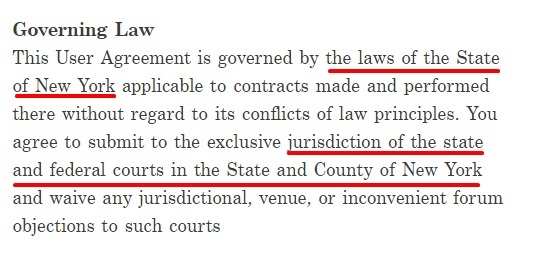
Disclaimer of Warranty/Limitation of Liability
A disclaimer of warranties and limitation of liability clause restricts the user's rights to seek (and receive) damages in two scenarios.
A warranty disclaimer says you are not making promises, for example that your service will always be available or that it will allow a user to perform a particular task. You can either list specific promises that you are disclaiming or say that you make no promises except those specifically listed in the User Agreement.
NCSoft specifies a key disclaimer for its services:
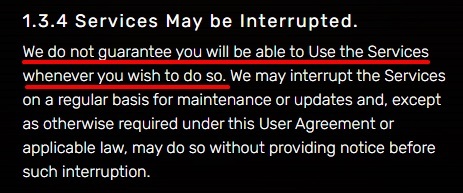
A limitation of liability says you are not accepting responsibility for damages caused to the user. This could be financial, physical or other damage. Again, you can either list specific liability that you are not accepting or say that you only accept specific types of liability. You can also impose financial limitations, for example that your liability is limited to the amount the user has paid you.
In some countries and areas, the law may override warranty disclaimers and limitations of liability in specific circumstances. For example, if you sell goods customers may have a legal right to an implied warranty that the goods are as described. You may always be liable for damage caused by deliberate actions or negligence.
Google limits its liability as much as possible while making clear it doesn't try to limit legally-required liabilities:
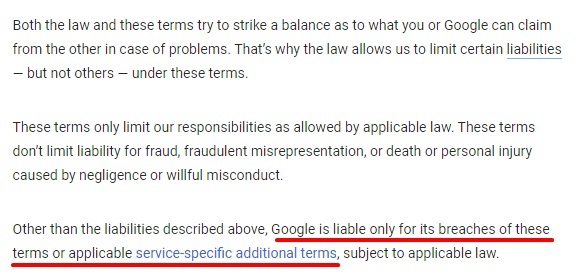
Termination
This clause covers how your agreement with the user will end and what happens next. Key points to include are:
- When and how either side can end the agreement
- How much notice is needed to end the agreement
- Whether you can end the agreement early for a breach of the agreement (for example, a user breaking rules)
- Whether the customer gets any refund of fees depending on the way the agreement ends
- When the customer loses access to the service
- What happens to any user generated content such as posts or private messages on a member-only website
Apple makes clear that if it bans a user, the user is still responsible for any fees they have racked up:
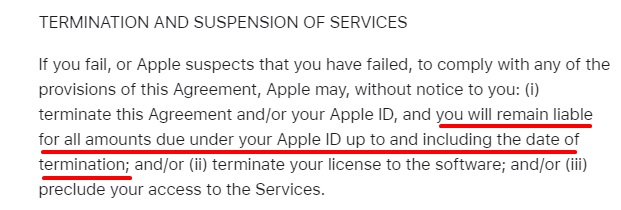
These are just the minimum, most commonly seen clauses in most User Agreements. Some of them may not be applicable to you, while there may be others you need to include too, such as a clause addressing returns and refunds if you sell goods. But this is a good place to start and build out from.
How to Display and Get Agreement For Your User Agreement

Like with any legal agreement, you stand a much better chance of relying on a User Agreement in a legal dispute if you can show the user had a reasonable chance to see it and that they actively agreed to it.
Display the User Agreement on your website, either as a dedicated page or as part of a wider legal page.
You should then clearly highlight this agreement both at the point somebody signs up to start using your service, and in the navigation of your site.
A great option for display is via a footer link that appears at the bottom of every page.
Reddit includes a link to the User Agreement in its main menu, accessible on every page:

The only way you can confidently rely on your User Agreement in any legal dispute is to prove the user read and agreed to it before they started using your service.
To be certain of this, make it impossible for the user to access the service (such as a subscription or member-only area) until they have confirmed agreement. This confirmation should:
- Be as close as possible to the point of signing up to a service
- Be clearly marked as accepting the User Agreement, preferably with a link to the agreement
- Require a positive indication such as ticking a checkbox before clicking a button to sign up. Don't use a pre-ticked checkbox or other method that is set to "agree" by default.
Xiaomi requires users to tick a checkbox before they can proceed with signing up to an account. This checkbox is clearly labelled as agreeing to the linked User Agreement:
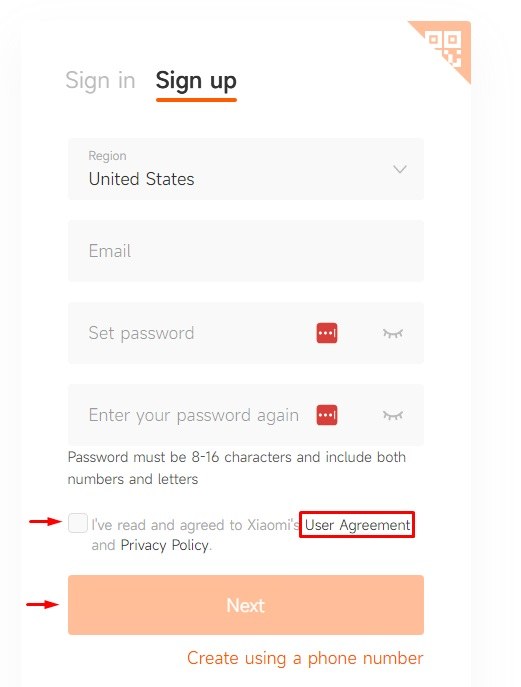
Summary
A User Agreement is a binding deal between you and your users. It covers your relationship in providing a service, which can include a website.
Having a User Agreement reduces the chances of a legal dispute (but increases your chances of winning a case.) It also builds trust and authority.
Key clauses and information to include in User Agreements are:
- Rules setting out banned actions by users and the consequences of breaking the rules
- The position of intellectual property for you, users and third parties
- How you handle personal data
- Whether you guarantee a particular service level and what compensation you offer when you fall short
- Which laws, court systems and legal processes apply to any dispute
- How the relationship can be terminated and what happens as a result
Make sure users can easily find your User Agreement, for example through a footer menu link. Don't let users sign up to, or start using, your services until they have actively confirmed they accept the User Agreement. Use a checkbox or similar method to obtain clear consent.
